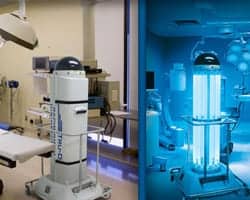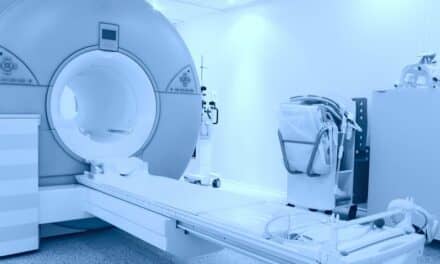Consider a Service Cocktail
(This is part 2 of a two-part article. Part 1 appeared in the April issue of 24×7)

MRI equipment-service training that is designed to bring a biomedical technician to a certain level of service competence, which depends on how much time and how much expense an organization is willing to incur, is available from independent training organizations and through OEMs. Nevertheless, an internal-service engineer should have a minimum level of formal electrical engineering education (most medical imaging service engineers now have a 4-year degree) and the internal resource should have direct experience servicing complex diagnostic imaging equipment (eg, CT scanners) before a hospital decides to invest in the necessary MRI service training. A trained MRI service engineer should be able to troubleshoot and diagnose the majority of functional and image-quality-related issues down to the PC-board level, swap hardware down to the PC-board or even component level, and perform comprehensive preventive maintenance on the system. An in-house service engineer may even be able to perform in-house repair on major electromechanical subsystems.
Along with training, the in-house group must have access to the specific tools required to maintain and service their MRI equipment. Depending on the breadth of service to be supported by the internal group, certain tools are required to perform in-house MRI service (Table 1).
| Table 1 1.5T MRI Scanner Service Tools |
| • magnet ramp and passive shimming tools (if taking on full magnet service) • eddy current tools • RF load • RF attenuators • service software key • image quality tool kit (including phantoms) • 300-MHz scope • digital multimeter (DMM) • nonferrous hand tools • system documentation • RF coil servicing equipment (network analyzer4, standard RF capacitors, diodes, etc) • test cables 1. Internal engineering service groups can also elect to perform system testing for RF coils rather than lab testing, eliminating the need for a network analyzer. |
Much of this list is standard off-the-shelf lab equipment that a hospital’s biomedical engineering department might already have or that is readily available for purchase. Other items on the list, such as documentation and service-software keys, might be proprietary to the OEM. Proprietary service tools and information are made available under OEM sales/service agreements or potentially via third-party service groups. In addition, the hospital may decide not to service all of the hardware associated with the system. For example, a hospital may choose to contract the service of the magnet to a specialist in this subsystem (the OEM, the magnet manufacturer, or a helium/cryogen service specialist), or will send RF surface coils out for repair, eliminating the need to invest in tools and training required for supporting that particular subsystem. The in-house group should also have standard service-management tools for maintenance scheduling, contract management, and corrective and preventative action. For the financial analysis, it is assumed that the internal department has a basic level of infrastructure in place to support service operations.
Once an adequate level of training and tool availability is established, the hospital must ensure that a stable and cost-effective supply of spare parts exists. Depending on the scanner type, the specific part and the level of field replacement to which in-house group would like to service (eg, down to the subsystem level, down to the board level or down to the component level), spare parts are available from a variety of sources. Some subsystems such as the magnet, RF coils, RF amplifiers, gradient power supplies, and gradient coils may be proprietary to the OEM, making the OEM the sole source for new replacement parts and at times the only viable source for repair of equipment, particularly for newly introduced hardware. Nevertheless, many sources exist in the industry for getting aftermarket parts and/or for parts repair for the vast majority of hardware electronics that are likely to fail in an MRI system. OEMs, ISOs, system refurbishers, medical imaging depot repair facilities, spare-parts providers, OEM multivendor service groups, biomedical engineering groups at other hospitals, import/export companies, and the original manufacturer of a particular subsystem or component are all potential sources for spare parts and/or for part repair. Parts for almost all MRI scanners can be acquired cost effectively on the secondary market. Table 2 is a summary list of parts that an in-house service group should consider having on hand to support MRI service operations.
| Table 2 Recommended Spare MRI Parts |
||||||||||||||||||
1. Applies only to organizations taking on magnet service responsibility. |
An initial investment of around $100,000 in spare parts can be leveraged to support several MRI scanners (assuming highly similar hardware configurations). Parts can be used interchangeably among scanners and parts can be renewed through repairing items in the spares pool. Part repair/replacement, however, is a primary area in which a hospital is likely to see wide variability in costs over time. In good years, part failures and associated repair/replacement costs will be very low (could be $0; should average about $25,000 per year). In a bad year, an RF body coil may fail, costing the hospital $75,000 or more to replace, plus lost revenue due to system downtime. On average, there will be many more good years than bad, but part-cost variability is an aspect of financial risk that must be understood, appreciated, accepted, and mitigated by any health care provider considering in-house MRI service. Clearly, the more scanners with similar hardware configurations in the network over which to spread part cost variance, the lower the inherent risk characteristic of in-house service.
If considering in-house MRI service, providers should carefully qualify spare-parts sources from a cost, quality, and availability perspective and should maintain a sufficient level of “safety” inventory in-house and/or in conjunction with an outside service/repair organization to ensure that critical parts are readily on hand. While certainly a risk area, part repair/replacement variability can be effectively managed through up-front planning and diligent ongoing controls designed to enable internal service groups to ensure system uptime levels equivalent to or better than what is guaranteed in OEM service contracts at a substantially lower cost than an OEM.
With the fundamentals of organizational culture, training/experience, tools, and spare parts addressed, the health care organization can then look at the logistics involved with its MRI service. First, how many MRI scanners require service? Are they the same brand of scanner and do they have similar or equivalent configurations? It is estimated that an appropriately trained and equipped biomedical engineer can handle a significant portion of service responsibility for up to five high-field MRI scanners, assuming that they are similar systems and that they are located within a reasonable geographic distance of one another. The investment in training internal-service personnel on multiple brands of scanners, investing in redundant tools and hardware inventory, and excessive “windshield time” in traveling between sites can all have a profoundly negative impact on the return-on-investment for in-house service and will increase the risk of incurring excessive downtime. Nevertheless, a health care organization with multiple similar high-field scanners (generally, at least three) located reasonably close to one another (in the same metropolitan area) can realize a significant financial return from investing in in-house MRI service. (The estimated costs to a health care organization for supporting high-field MRI scanners internally are outlined in table 3.)
| Table 3 Estimated annual cost for in-house MRI service |
||||||||||||||||||||||||
| First scanner, first year of service, magnet service is outsourced
First scanner, subsequent years of service or additional similar scanners (up to five total systems), magnet service is outsourced
1. The average annual salary for hospital biomedical engineer taken from 24×7 magazine 2002 Compensation Pulse Check survey results is approximately $50,000. An experienced CT or MRI technician will usually earn at least 30% more than the typical hospital biomed. |
Cost of Ownership Analysis
As has been discussed in the preceding sections, each of the options available to a hospital for high-field MRI scanner service has distinct economic payback/risk and service-quality profiles. Given the framework provided, it is useful to look at the total cost of ownership of all three options side-by-side (tables 4–6). The financial model employed for this analysis is contingent on several assumptions. Using this fundamental return-on-investment framework, the underlying assumptions can be tailored to reflect almost any organization’s MRI service needs. The direct comparison of the estimated cost of service per MRI scanner over 7 years in today’s dollars is provided in table 7. (For detailed cost-of-ownership analysis for each option, please see online version of this article at www.24x7mag.com.)
| Table 4 OEM: 7-year cost-of-ownership assumptions |
| • New 1.5T scanner purchase price: $1.374 million1 • 1-year warranty • Standard OEM service agreement; $120,000 base year price (8:00 am–5:00 pm coverage); $108,000 for multiple scanners • Inflation based on current CPI of 2.1% (no food and energy) • Discount based on current 7-year Treasury Bill yield of 3.7% • Does not include facility improvement/siting costs 1. Current average selling price for a conventionally equipped 1.5T MRI scanner from a major medical imaging OEM. |
| Table 5 ISO: 7-year cost-of-ownership assumptions |
| • New 1.5T scanner purchase price: $1.374 million • 1-year warranty • Standard ISO service agreement; $108,000 base-year price; $97,000 for multiple scanners (10% less than standard OEM contract) • Inflation based on current CPI of 2.1% (no food and energy) • Discount based on current 7-year Treasury Bill yield of 3.7% • Does not include facility improvement/siting costs |
| Table 6 In-house: 7-year cost-of-ownership assumptions |
| • New 1.5T scanner purchase price: $1.374 million • 1-year warranty • $65,000 annual salary (plus 20% burden) for biomedical engineer • Engineering group requires training and tools: $75,000 up-front expense (scanner No. 1 only) • Approximately $7,500 of additional training/tools per year • One engineer can support up to five scanners (network has at least five similar units) • Magnet service is outsourced • Scanners are located in close proximity to one another (no incremental travel expense is factored in) • Additional scanners are from the same manufacturer and have similar configurations • Inflation based on current CPI of 2.1% (no food and energy) • Discount based on current 7-year Treasury Bill yield of 3.7% • Does not include facility improvement/siting costs |
| Table 7 Comparison: 7-year cost of service* |
|
|
Conclusion
For a hospital considering MRI service strategies, potentially attractive alternatives to the standard OEM service agreement exist. Health care organizations should take the time to objectively evaluate the various MRI service options from financial, logistical, and visceral standpoints. When negotiating MRI service contracts, hospital administration would be well served to have actual data relating to the three basic alternatives on hand in order to best position their organization to leverage the financial and service quality rewards available through each of the service options.
Depending on the number of MRI scanners in a particular network and “genetic makeup” of the systems, a health care organization can save more than 35% or around $1.2 million in service costs per every five high-field scanners over the typical 7-year economic and technological life of a system by using in-house engineering resources rather than standard OEM service. With the right approach, hospitals should be able to achieve this level of savings without suffering any decrease in overall scanner uptimes. With this level of potential savings, administrators might consider strategically building their in-house engineering service departments specifically to support MRI equipment. While the economic risk associated with in-house MRI service is fundamentally higher than with the alternative approaches, the significant potential savings and the implementation of appropriate risk mitigation strategies should more than absorb the financial volatility related to parts costs and system reliability for health care networks supporting multiple MRI scanners.
Similarly, utilizing ISO service organizations could produce savings of around 10% or approximately $350,000 per every five scanners compared with the OEM over 7 years. Economic risk associated with going with a national ISO is on par with that of an OEM (ie, very low), particularly for multivendor service situations. Additionally, ISOs now offer compelling asset management programs that could yield additional savings over what is produced by the ISO MRI service agreement. The ISO industry seems to have stabilized from the rough-and-tumble days of the 1990s and a few national ISOs can now provide the service levels demanded by health care providers.
Last, the OEM is the relatively expensive but safe choice. OEM service organizations have proven that they can consistently provide a high level of service quality, particularly for their own brands of scanners. OEMs are expanding their service offerings through such programs as single-source, multivendor arrangements aimed at bringing service costs down. OEMs can no longer take for granted that hospitals will blindly purchase and/or renew MRI-service agreements and they will no doubt seek to maintain their dominant position in the MRI service market through aggressive pricing and expanded offerings.
It is precisely because each of the alternatives has such distinct costs, benefits, and risks that health care organizations should endeavor to thoroughly evaluate each of the MRI service options and may be best off to blend the most attractive aspects of each approach to create a custom-tailored MRI service strategy. With a well-developed strategy and successful implementation, hospital administrators can sit back and enjoy an MRI service cocktail.
Christopher M. Cone is senior director of business development for Sonora Medical Systems, Longmont, Colo.
Acknowledgements
The following individuals made contributions to this paper in the form of peer review, comment, observation, input, or a combination thereof:
John H. Baldo, PhD, director of MRI technologies at HEI Inc—Advanced Medical Division.
Adam E. Coffey, president of Masterplan, an independent service organization that provides MRI field service.
Rusy Mills, radiology engineer at Carolinas Health Care System.
G. Wayne Moore, president and CEO of Sonora Medical Systems.
Bruce A. Smith, director of MRI service at Sonora Medical Systems.





